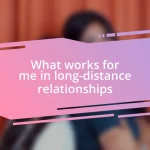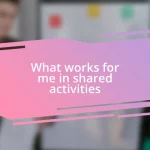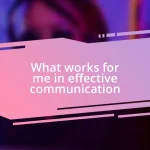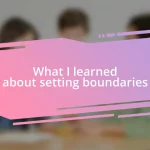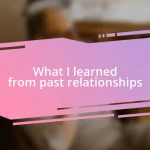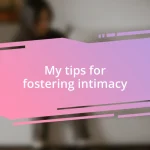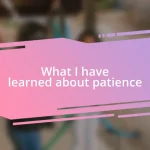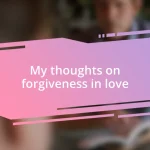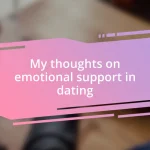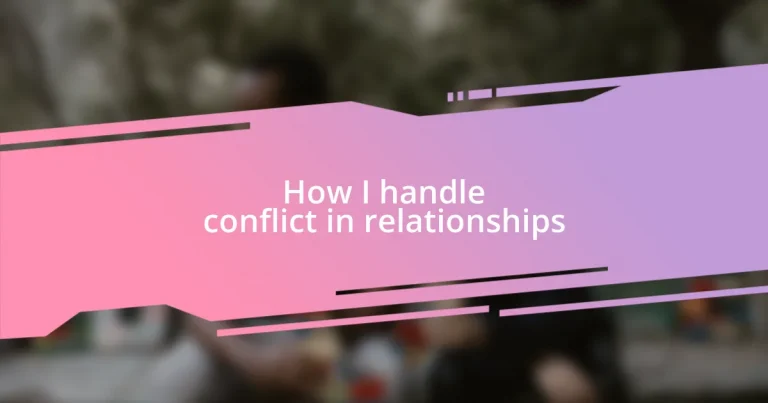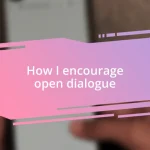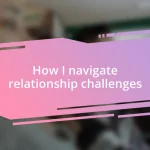Key takeaways:
- Conflict arises from differing expectations and values; embracing it as an opportunity for growth can strengthen relationships.
- Effective communication strategies, like active listening and using “I” statements, can significantly improve conflict resolution.
- Post-conflict, it’s vital to maintain connections through follow-ups and small gestures of affection to rebuild trust and understanding.
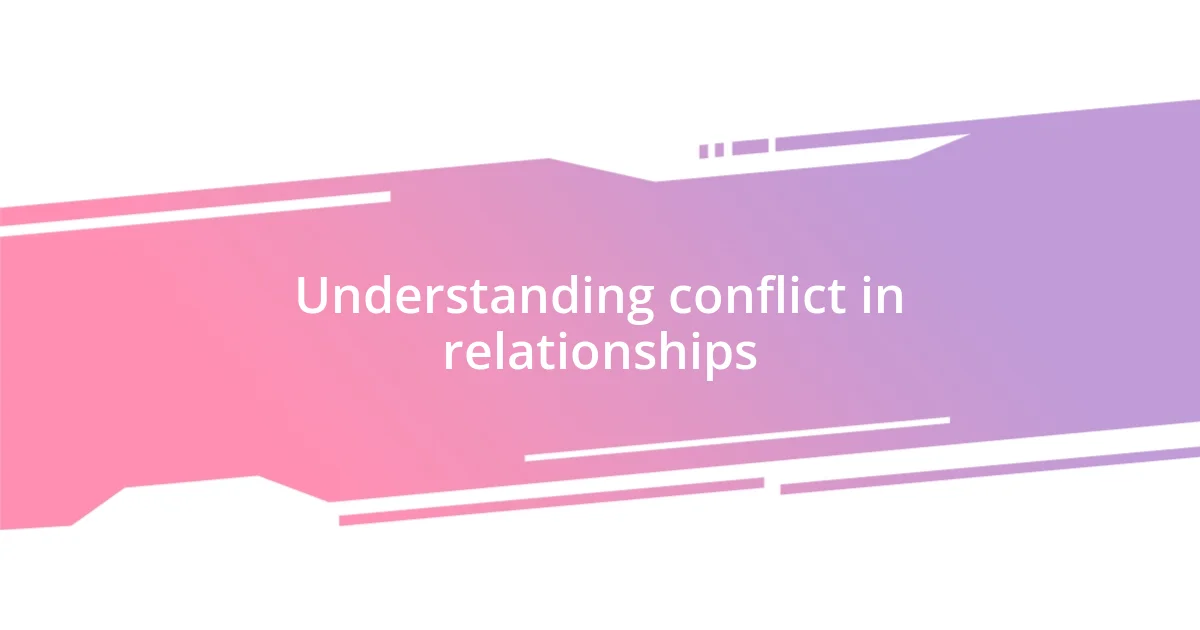
Understanding conflict in relationships
Conflict in relationships often arises from a clash of expectations or values. I remember a time when my partner and I disagreed on how we should spend our weekends. I felt the need for relaxation while they craved adventure. It made me question why we had such different desires and how that shaped our needs in the relationship.
Recognizing that conflict is a natural part of any relationship can change your perspective. I’ve seen couples treat conflicts as threats, but I believe they can be opportunities for growth. Isn’t it fascinating how confronting these issues can bring you closer? In my experience, every time we address a disagreement, we learn more about each other, which deepens our bond.
Understanding the emotional layers behind conflicts is essential. In my previous relationship, I often noticed that my partner’s frustration during arguments often stemmed from their childhood experiences. It made me realize that sometimes, it’s not just about the current issue at hand; it’s also about unresolved feelings from the past. Can you think of a time when emotions clouded the actual conflict? Recognizing these dynamics can turn conflict into a powerful tool for understanding and connection.
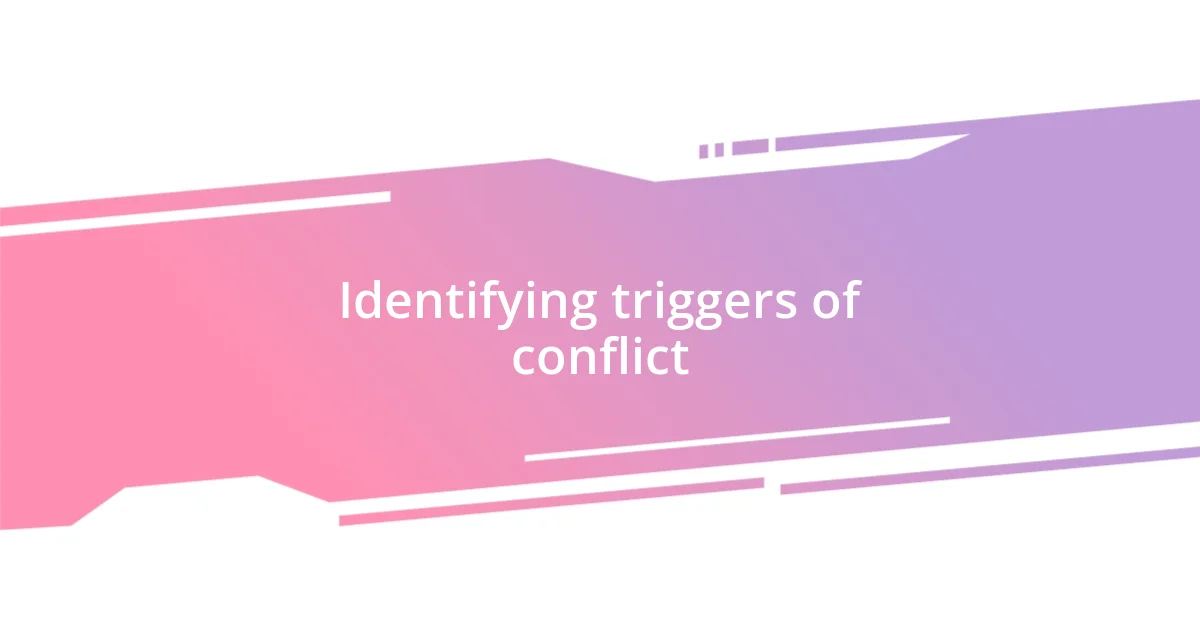
Identifying triggers of conflict
Identifying triggers of conflict is crucial for effective resolution. I’ve found that understanding what sparks disagreements can save a lot of frustration and heartache. For instance, I once realized that discussions about finances would escalate quickly because they tapped into my partner’s deep-seated fears about security. Recognizing that helped us approach these conversations with more empathy and patience.
It’s interesting how personal experiences shape our reactions. In my case, my family dynamic taught me to avoid confrontation, which sometimes led to passive-aggressive behavior in my relationship. During one heated exchange, I recognized that my inability to voice my concerns stemmed from years of avoiding conflict altogether. This self-awareness transformed how I communicated and allowed me to express my feelings directly instead of bottling them up.
Moreover, external stressors like work and family pressures can amplify our triggers. I recall one particularly stressful week when I was overwhelmed with work assignments. My partner noticed my short temper, which was more about my stress than our relationship. By identifying these triggers, I learned to communicate what was bothering me rather than misdirecting my frustration toward my partner. It’s an ongoing journey, but understanding these nuances has made a significant difference in creating a healthier dialogue between us.
| Triggers | Emotional Response |
|---|---|
| Finances | Fear and anxiety |
| Past family experiences | Avoidance or aggression |
| External stressors | Frustration |
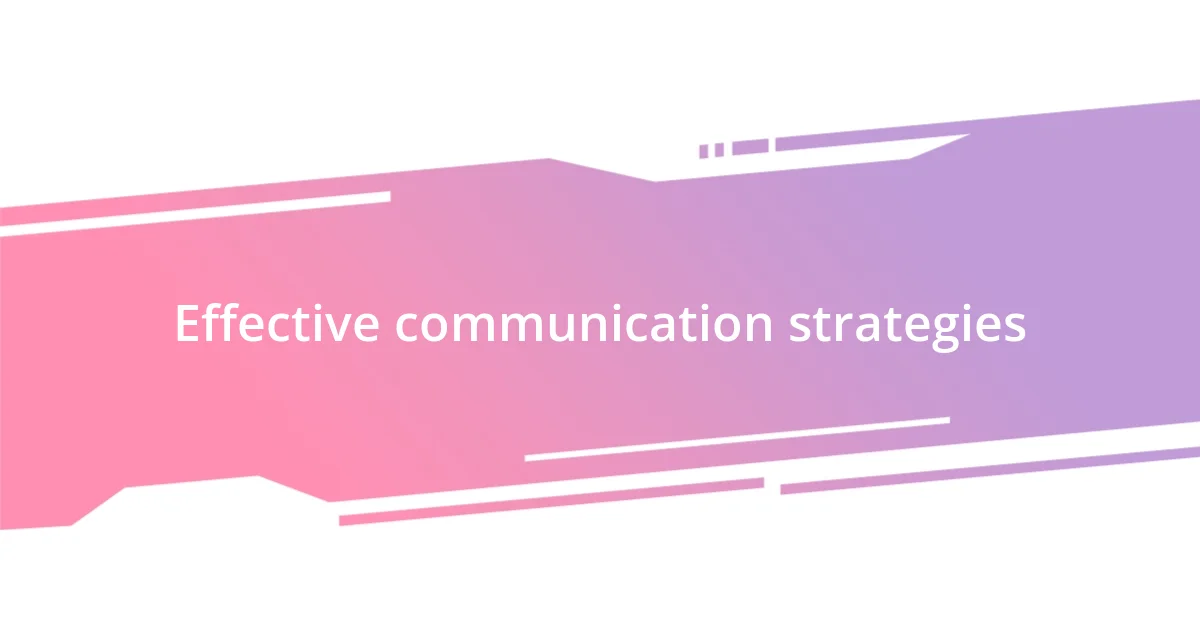
Effective communication strategies
Effective communication plays a pivotal role in resolving conflicts in relationships. I’ve found that when I approach discussions with an open mind and genuine curiosity, it creates a safe space for my partner to express themselves. For instance, during a tense moment about our differing ideas on how to handle holidays, I decided to ask open-ended questions instead of diving into my concerns. This not only eased the tension but also helped us explore each other’s perspectives, ultimately paving the way for a joint decision that made us both feel valued.
Here are some effective communication strategies that I’ve employed:
- Active Listening: I always try to fully focus on what my partner is saying, acknowledging their feelings without immediately preparing my response.
- Use “I” Statements: Instead of saying “You never listen,” I shift to “I feel unheard when my thoughts aren’t acknowledged.” This helps prevent defensiveness.
- Stay Calm: When emotions run high, taking a few deep breaths and grounding myself allows for more composed interactions.
- Clarify Understanding: I often repeat back what I’ve heard to ensure I grasp their viewpoint correctly, which can prevent miscommunication.
- Set Timeouts if Necessary: If things get too heated, suggesting a short break can allow both of us to cool down and regroup, making dialogue more productive later.
In my experience, these strategies transform the way conflicts unfold. For example, the first time I tried active listening, my partner had a visibly relieved expression. It became clear that providing that space made all the difference. Listening without interruption encouraged them to share feelings that had been simmering beneath the surface. This was a game-changer for us.
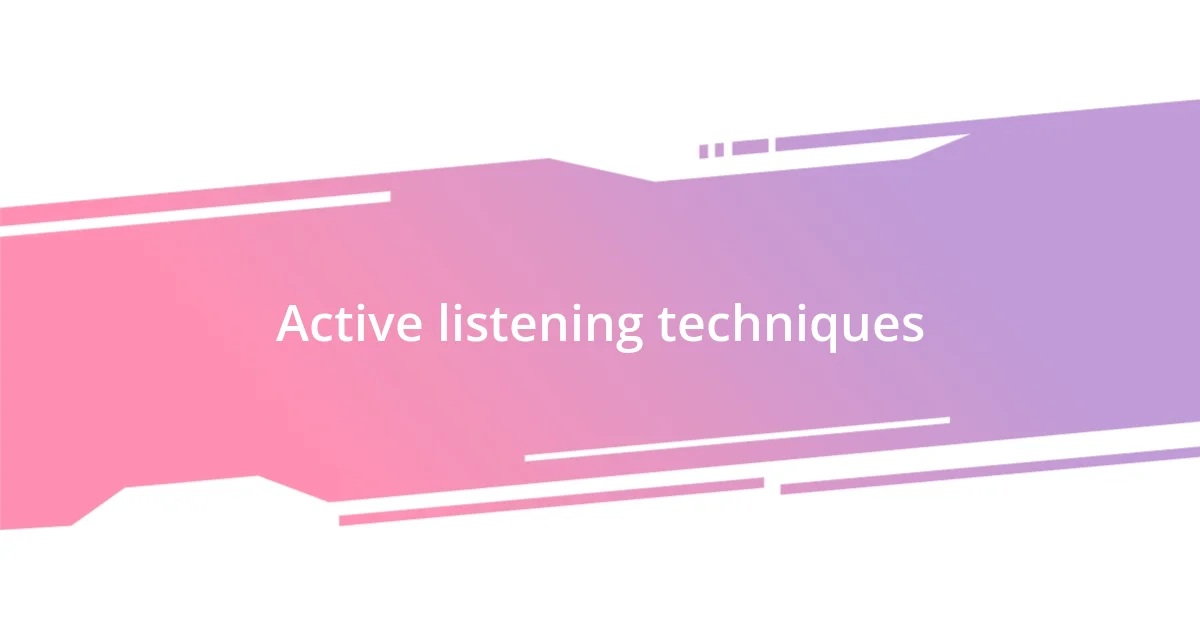
Active listening techniques
Active listening is more than just hearing words; it’s about truly understanding the message behind them. I remember a conversation where my partner was venting about a tough day at work. Instead of just nodding, I made a conscious effort to reflect back what I heard. “It sounds like you felt really overwhelmed by everything.” The moment I validated their feelings, I noticed a shift. It was as if a weight lifted, allowing for a deeper connection.
One technique I find invaluable is using pauses to give my partner space after they’ve spoken. There was a recent instance when we were discussing a disagreement about how to spend our weekends. After sharing her point, I paused before responding. This gave her the chance to elaborate if she wanted, and surprisingly, she felt comfortable diving deeper into her feelings. This simple act demonstrated my genuine interest in her perspective, encouraging open dialogue rather than defensiveness.
Sometimes, it’s easy to fall into the trap of thinking you know what the other person means, but assuming can lead to misunderstandings. Have you ever thought you understood your partner’s feelings, only to realize later you missed the mark? I have! There was a time I misinterpreted a sigh as a sign of annoyance when, in reality, it was just exhaustion. By asking clarifying questions, like “What’s on your mind?”, I’ve often found that not only do I gain deeper insights, but it also builds trust. It’s a small change that yields significant rewards in how we communicate.
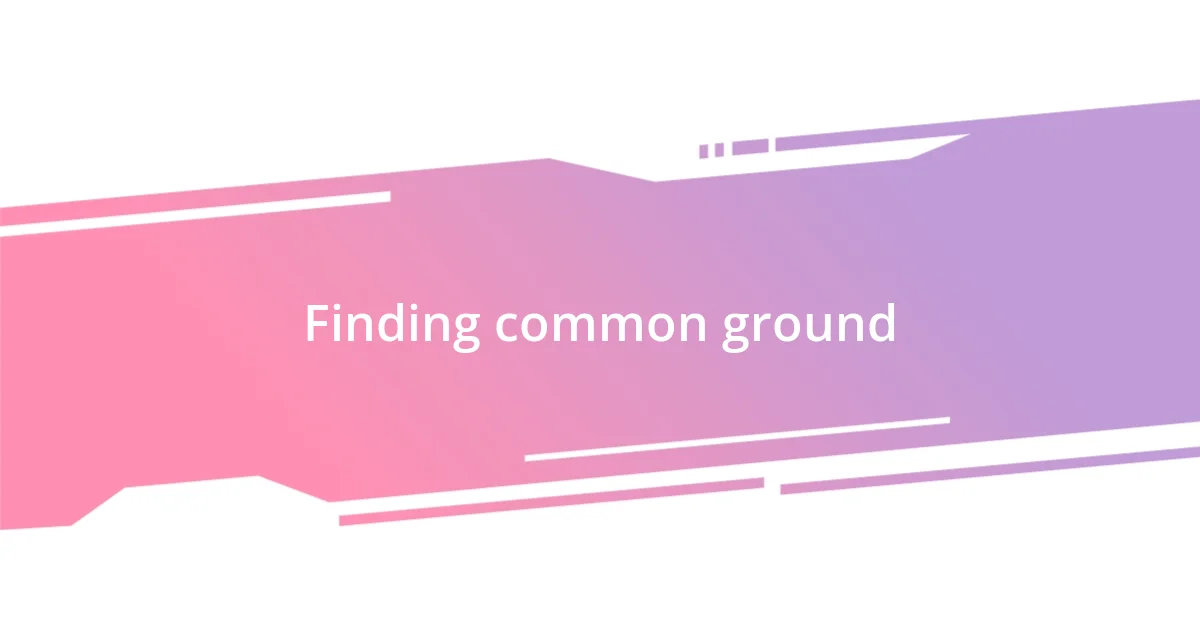
Finding common ground
Finding common ground is often the starting point of any resolution in a relationship. I recall a particularly challenging disagreement with my partner about where to go for vacation. Instead of pushing my own agenda, I suggested we each write down our top three destinations. When we reviewed our lists, it was enlightening to see how close our preferences were. We ended up picking a place that had elements from both our choices, making the trip more enjoyable for us both.
I think one of the most important aspects of finding common ground is acknowledging the emotions involved. During heated discussions, I’ve found that stepping back and saying something like, “I can see this means a lot to you,” softens the atmosphere. It reminds us both that our feelings are valid, even if our opinions differ. This approach not only helps in defusing tension but also builds a bridge of empathy. Have you ever noticed how quickly walls come down when you genuinely acknowledge someone’s feelings? I’ve witnessed it firsthand, and it’s transformative.
Through these experiences, I’ve realized that collaboration is key. In another instance, my partner and I had conflicting views on household chores. I took a moment to ask her what specific tasks she felt burdened by, speaking from my perspective as well. Together, we created a chore chart that reflected both our preferences and energy levels. Not only did this solve our issue, but it also fostered a spirit of teamwork. This process of finding commonality in even mundane tasks can strengthen the bond, reinforcing that we’re navigating life together, not against each other.
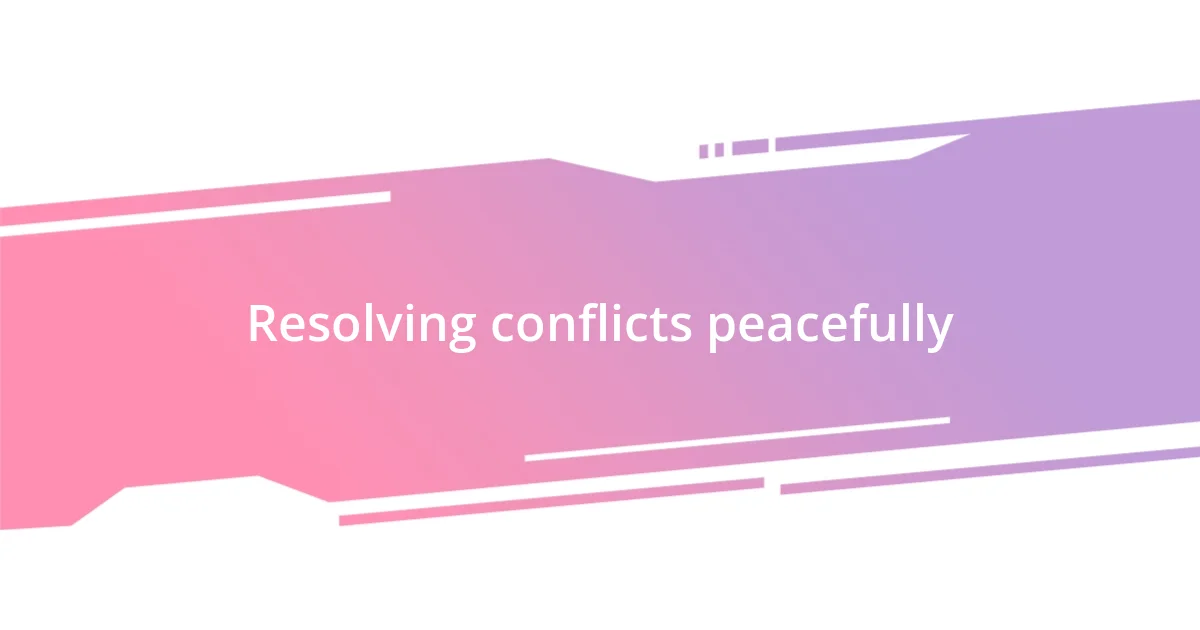
Resolving conflicts peacefully
When it comes to resolving conflicts peacefully, I’ve found that maintaining a calm demeanor is crucial. I remember a moment during a heated debate over finances when I took a deep breath before responding. Instead of reacting impulsively, I focused on remaining steady, which helped lower the tension in the room. Have you ever noticed how much easier a conversation flows when both parties approach it with a sense of calm?
I also believe that choosing the right time to discuss conflicts can make a world of difference. For example, I once attempted to resolve an issue right after a long, stressful day, and it backfired spectacularly. Both my partner and I were exhausted, leading to snappy responses and misunderstandings. Now, I propose setting aside time when we’re both refreshed. This simple change has led to more productive discussions and a greater willingness to listen.
Finally, I find that expressing gratitude during a conflict can surprisingly shift the narrative. Recently, after resolving an argument about our schedules, I made it a point to say, “Thank you for being patient with me. I appreciate that.” It transformed our dynamic; instead of holding onto grudges, we both felt valued and more connected. It’s these small acts of recognition that foster an environment where peaceful resolution flourishes—don’t you think acknowledging each other’s efforts goes a long way?
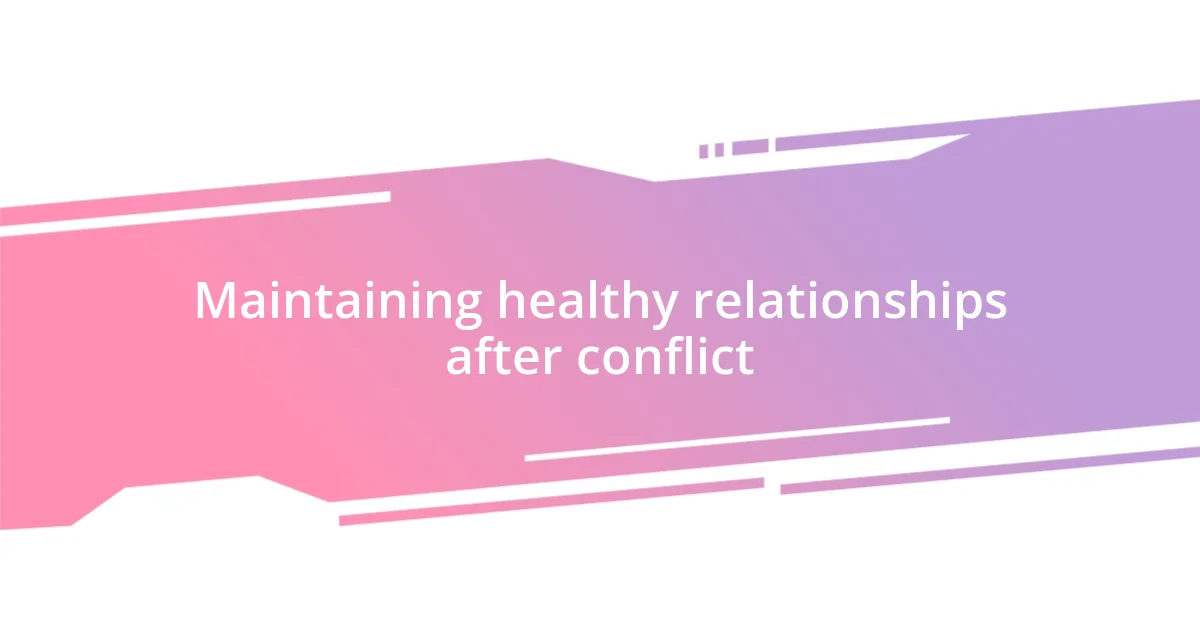
Maintaining healthy relationships after conflict
Even after resolving a conflict, the work isn’t quite finished. I remember a time when my partner and I had an argument about our differing approaches to parenting. After we discussed and settled the issue, I made it a point to revisit the conversation a few days later. I asked how she was feeling about our resolution. It’s amazing how such a simple follow-up can remind both of us that the discussion isn’t just a checkbox to tick off; it’s an ongoing dialogue that fosters trust and understanding.
In my experience, rebuilding connection is also essential. After a disagreement, I often initiate small, affectionate gestures, like making her favorite breakfast or sending a sweet text during the day. These little acts show that I care and want to move forward positively. It’s interesting how touch and kindness can heal wounds that words sometimes can’t. Have you noticed how meaningful those small gestures can feel after a tough conversation?
Moreover, I find that sharing our reflections on what we learned during the conflict can pave the way for stronger communication in the future. For instance, I suggested that we create a “conflict journal” where we both write down lessons learned from our disagreements. This collaborative writing sparked deeper conversations and allowed us to express ourselves more freely, reminding both of us that growth often emerges from challenging moments. Isn’t it fascinating how conflict, when handled thoughtfully, can be a catalyst for strengthening our relationships?
